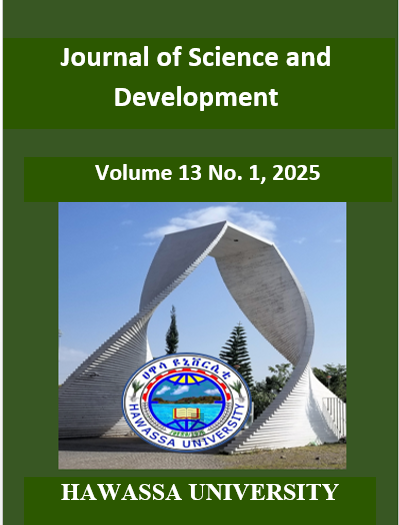Variability through crossing and subsequent selection towards a commercial cultivar in summer flower Hypericum androsaemum L
Keywords:
Hypericum, Rust resistance, Wild genotype, Crossing, progeny, New cultivar, Ruby ExcessAbstract
Hypericum androsaemum L., a popular summer flowering plant, faces significant challenges in commercial cultivation due to susceptibility to leaf rust diseases. These diseases affect marketability, forcing reliance on fungicides that increase costs and pose environmental concerns. This study aimed to enhance the commercial potential of H. androsaemum by introducing rust resistance gene through crossing a rust-susceptible commercial cultivar with a rust-resistant weedy genotype. The crossing was conducted at Milko Flower Farm, central Ethiopia, in 2021, resulting in viable F1 progenies. From the F1 population, five progenies were selected based on their desirable traits, such as tall stems, deep green rust-free leaves, and large deep red berries. Subsequent trials in 2022 using a completely randomized block design revealed that Progeny One exhibited the most favorable traits, including uniformity, distinctiveness, and reproducibility compared to the commercial cultivar used as a parent in crossing. This progeny was named H. androsaemum 'Ruby Excess,' registered and now grown commercially for export. The study demonstrates that breeding programs integrating rust resistance with ornamental traits can reduce fungicide use, enhance marketability, and mitigate environmental impacts. Furthermore, the methodology employed in this study could be adapted to introduce rust resistance into other commercial cultivars of H. androsaemum. However, the viability of F1 seeds and proximity of weedy populations to flower farms highlight the need for measures to prevent unintended spread and potential invasiveness. Therefore, implementing measures to prevent unintended spread is essential.
Downloads
Published
Issue
Section
License
Copyright (c) 2025 Dr Andargachew Gedebo

This work is licensed under a Creative Commons Attribution 4.0 International License.
The author(s) of the individual articles remain the copy right of their articles.

